Digital
Gladeye 55 The DJ and the War Crimes
-
Pou Auaha / Creative Director
Gladeye
-
Client
Rolling Stone
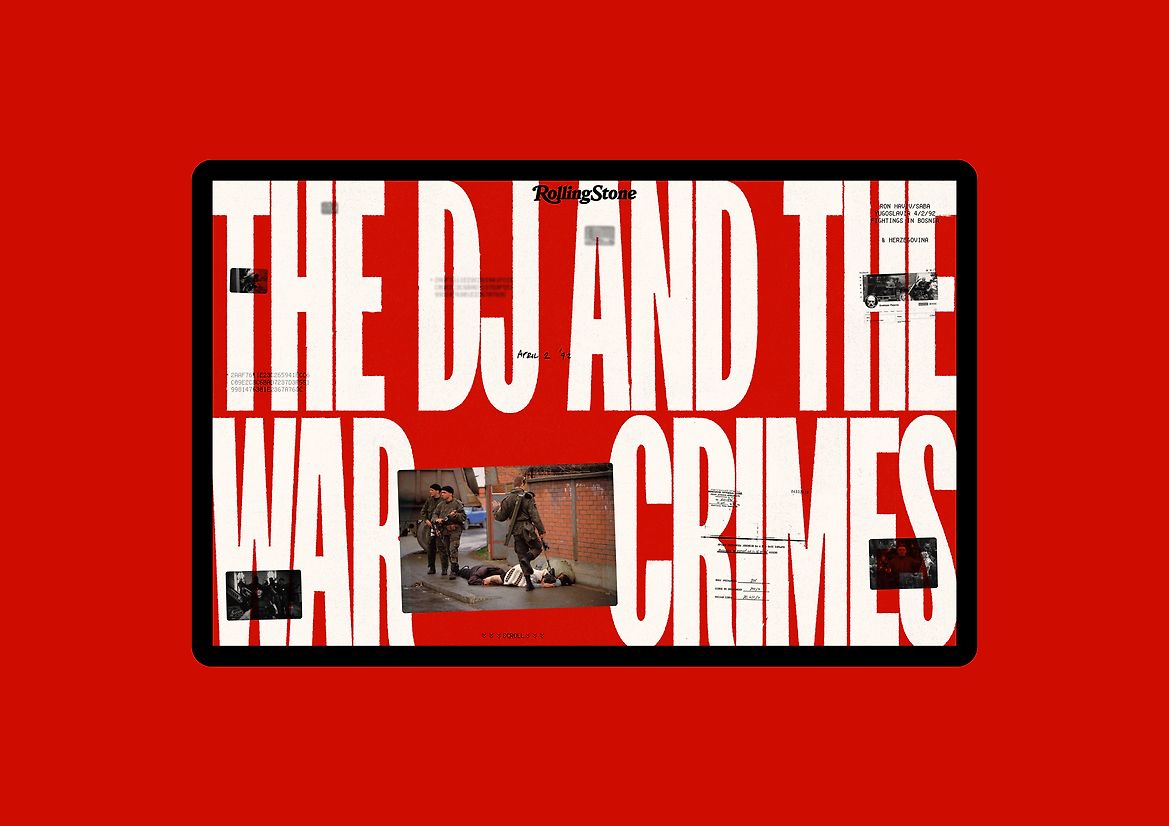

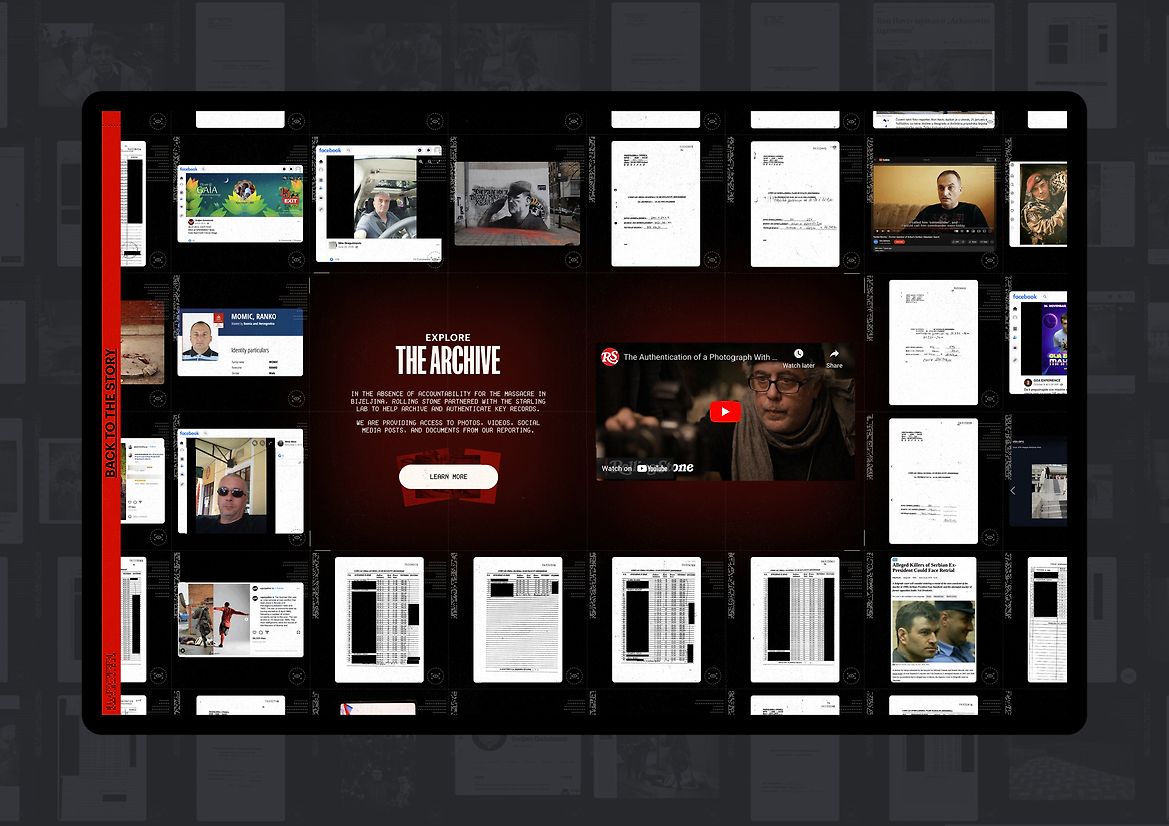
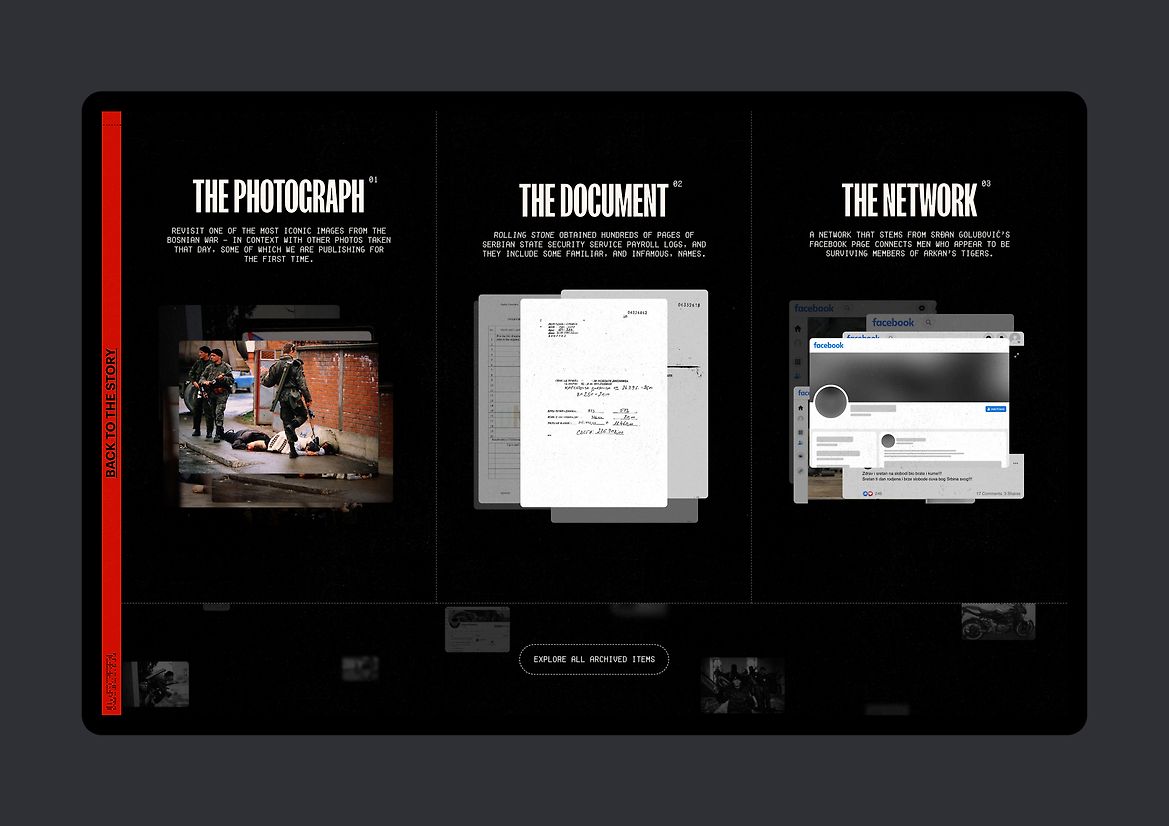
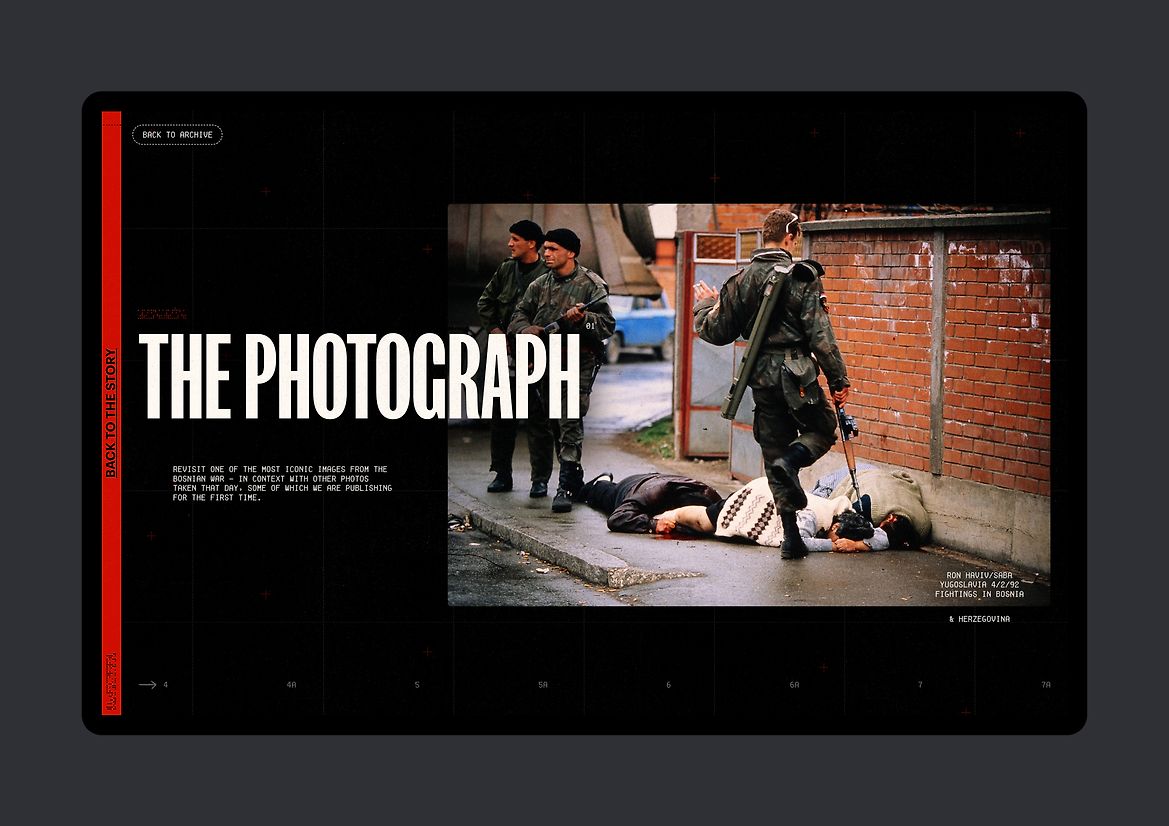
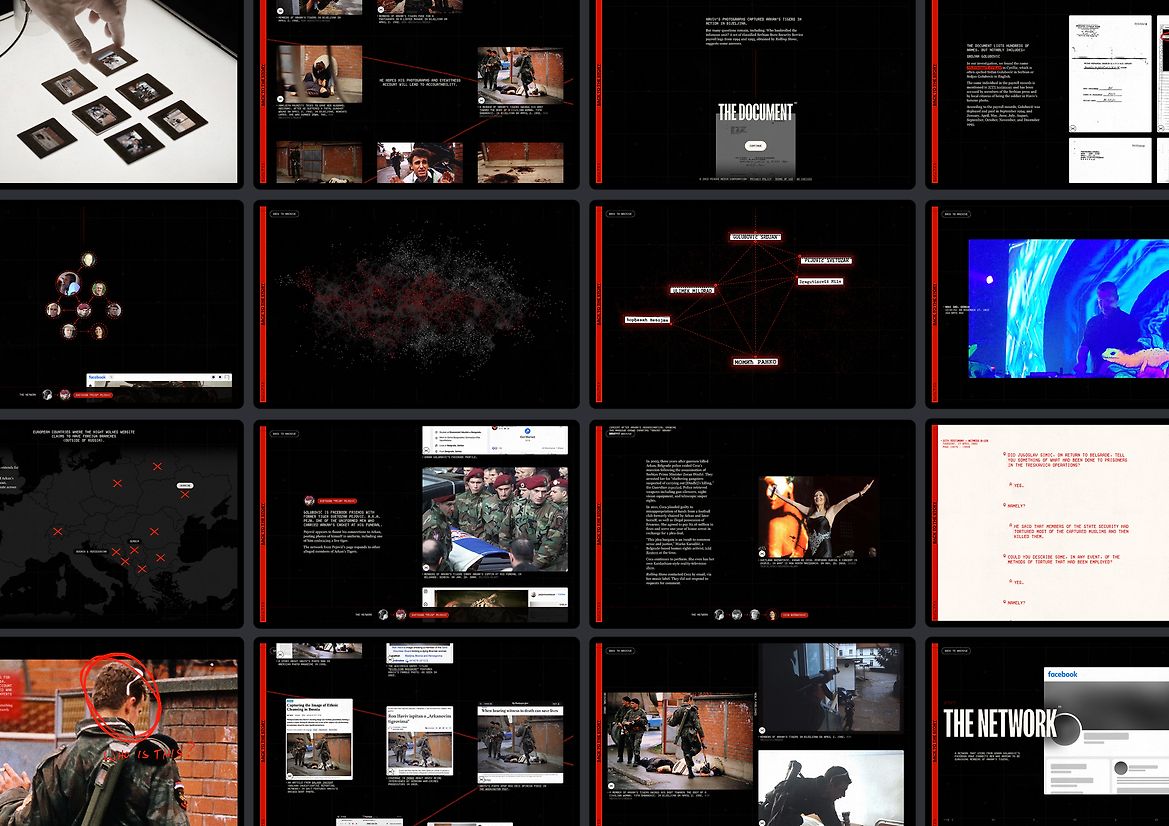
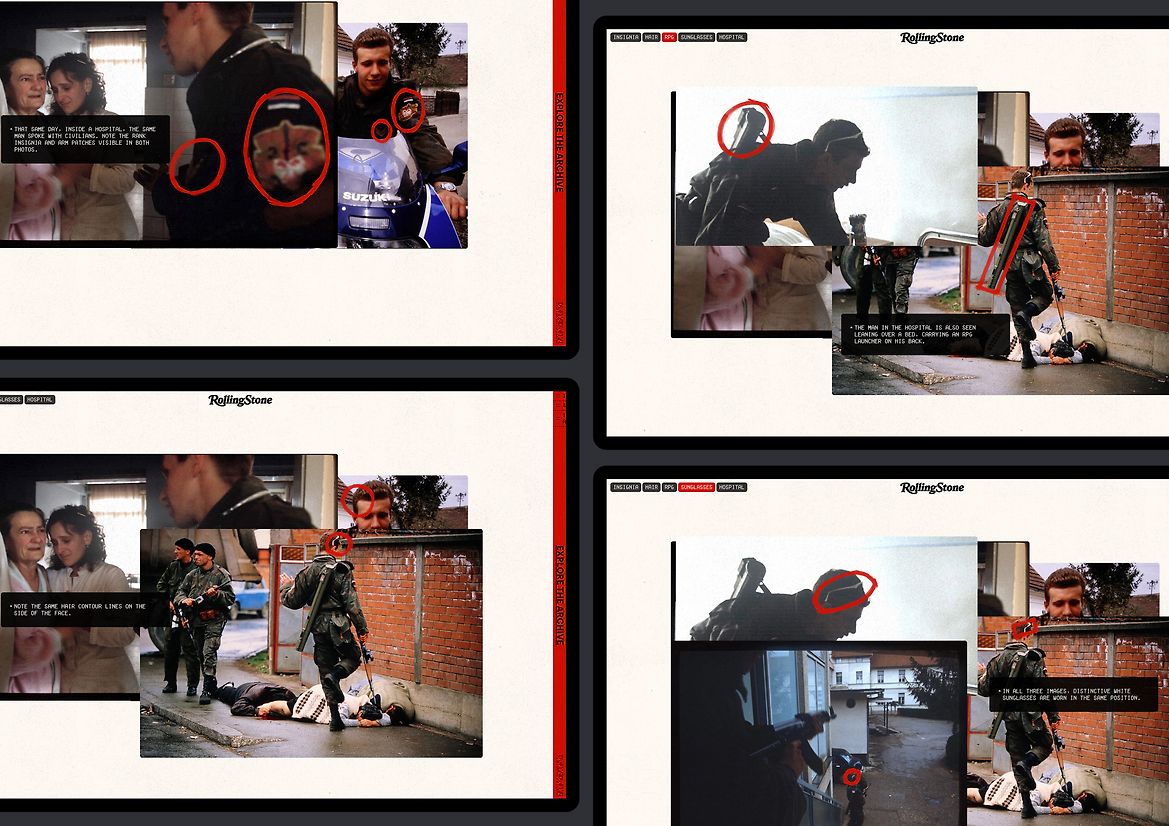
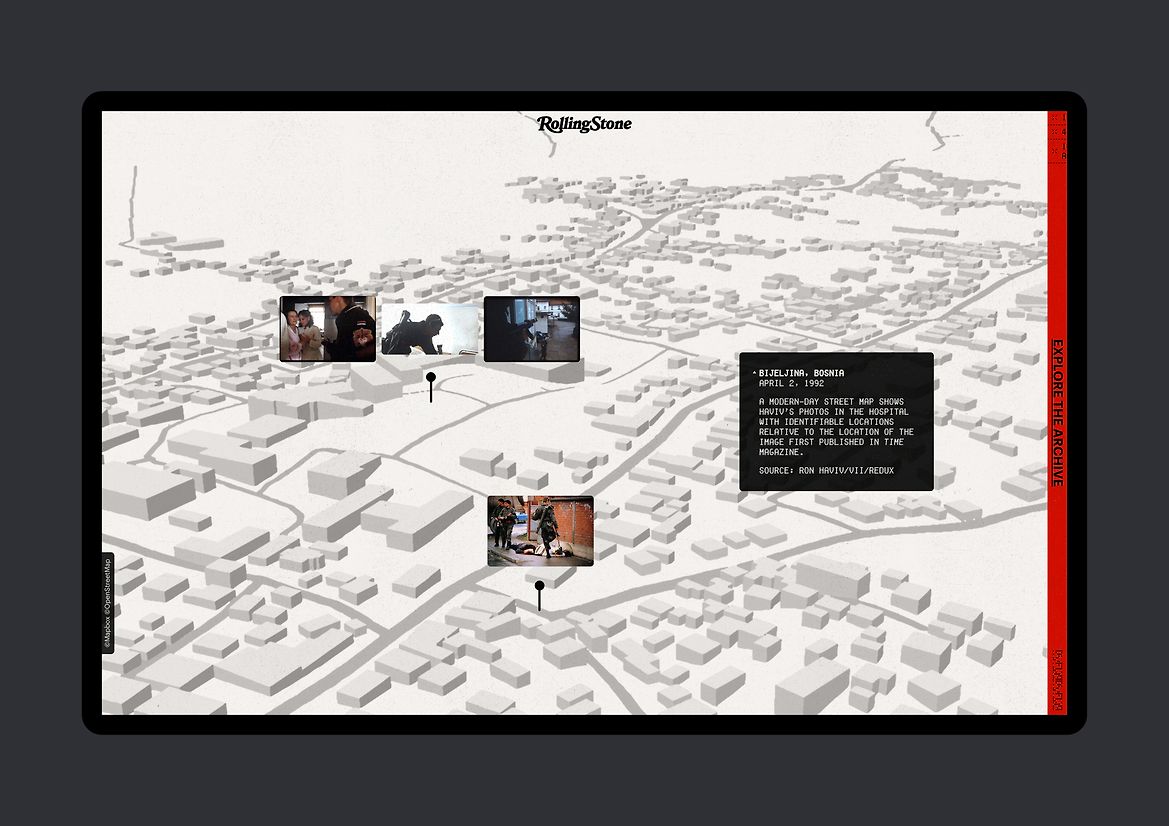
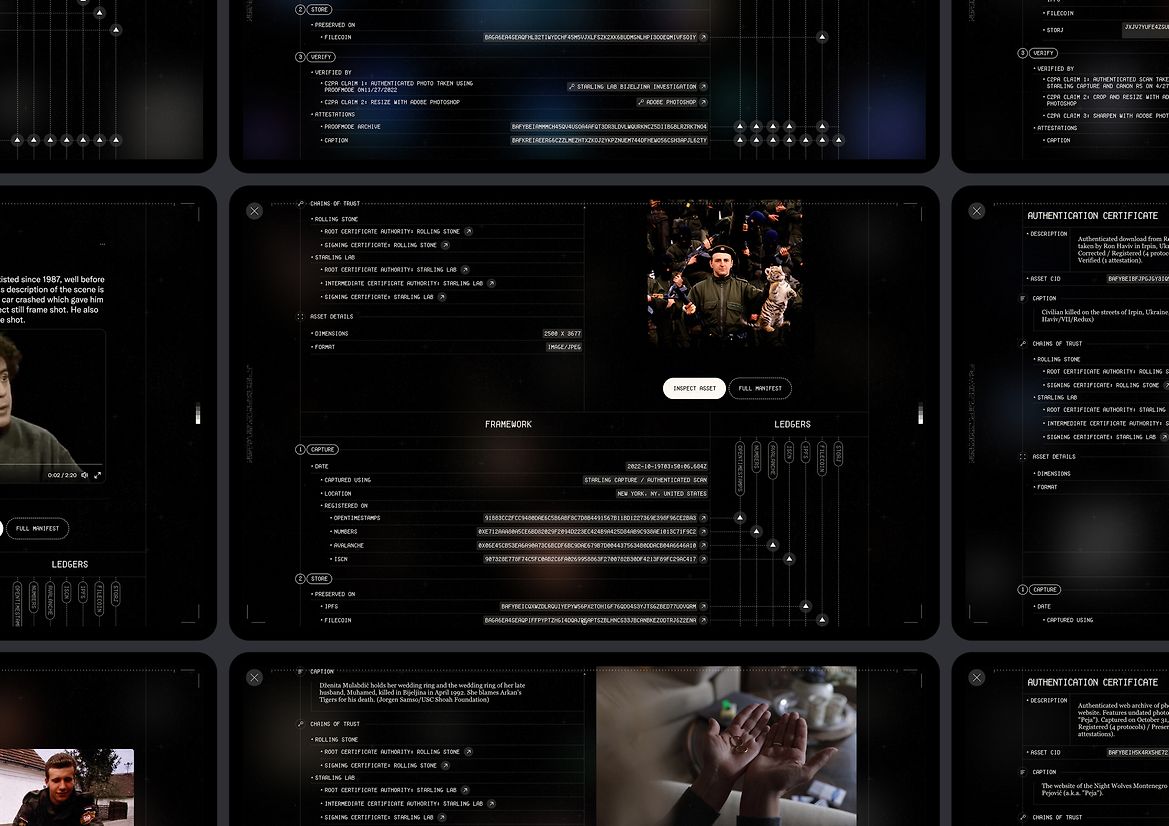
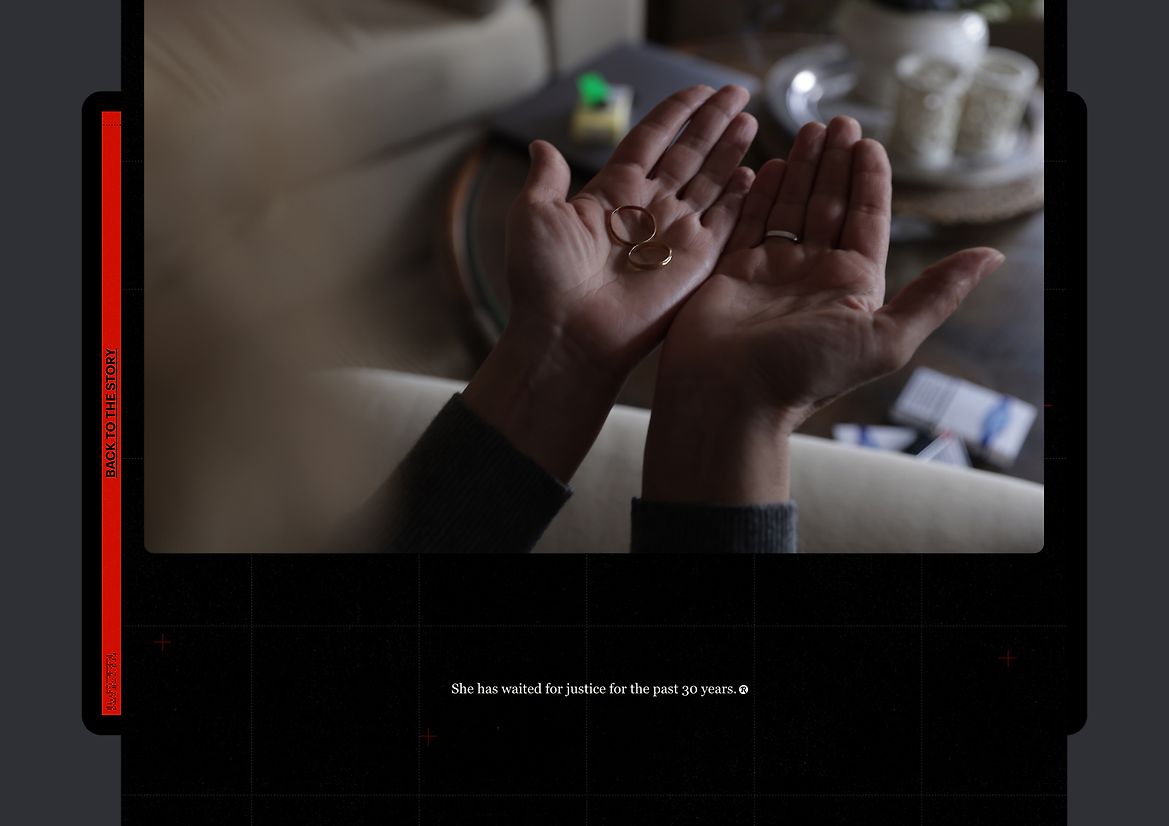
Description:
"The DJ and the War Crimes," is a digital storytelling site for Rolling Stone and The Starling Lab. It forensically retraces a war crime by a Serbian paramilitary group in Bosnia during the 90s. The article combines investigative journalism with blockchain technology to identify the murderer and push for justice 30 years on.
Rolling Stone’s investigation uncovered troves of imagery from Ron Haviv, the photojournalist who witnessed the atrocity. They also combed Serbian payroll documents and social media pages connected to “Arkan’s Tigers” to track the participants since the conflict, including a well-known trance DJ in Europe.
Drawing on the aesthetic of film photographers’ contact sheets, our art direction used pencilled annotations to point out important details. They act as the hand of the investigator, providing a visual thread that runs throughout the piece. We also chose a dot-matrix monospace typeface that closely mirrors the one on photographer Ron Haviv’s film slides (and which resonates with the blockchain metadata).
The stark black and white with dramatic red colour palette, and the grainy or ripped textures convey a mood of raw, uncompromising reportage. While Bosnian war posters from the era inspired both the condensed display typeface and the colour scheme.
We used layering effects and animations throughout the site, to mirror the process of the investigation and give the feeling of an evidence board, mapping connections between disconnected moments to locate the truth.
We created a fully interactive evidence library where users can pan around to explore that primary content directly. And we separated criticial evidence - The Photograph, Document and Network, into secondary pages, then offered them contextually during the main piece. Users can navigate a huge amount of content without feeling overwhelmed and it rewards subsequent viewings.
We designed a unique “Authentication Certificate” view to show Starling Lab’s chain of custody tech which imprints every moment - from the click of the shutter, to an update in Photoshop - onto an immutable blockchain. We wanted the reader to assume the role of detective, moving back through time into the raw archival footage and going deeper into the research behind the story.
The impact of this project was resounding. It received over 150,000 visits and thousands of tweets on launch. It stands as a proof of concept for Rolling Stone and The Starling Lab’s technology, pointing to the future of investigative journalism in an era where trust and truth are more important than ever.
Judge's comments:
The scale of this site was immense, with so many documents and archives, brought to life in such a clever and engaging way. We loved the way they made the story “discoverable”, creating a robust and immersive story-telling experience.
Exploring the increasingly relevant topic of how we verify facts in a post-truth world, especially with the advent of AI generation and manipulation of images, their application of Blockchain technology to authenticate the photojournalist’s image sources is innovative and pushes the medium forwards. Providing clear provenance of photographs and transparent evidence of alterations, it demonstrated a futuristic approach.
The animation used to support the narrative was on-point and helped to guide you through a lot of information. In addition, we loved the social justice element to this, as it works to expose the roles of right and wrong. Overall, a perfect marriage of technology and storytelling.